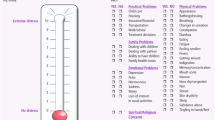Abstract
Tak Tent is a cancer support organisation consisting of 14 groups of which 11 are based in Scotland. In 1985, a survey was conducted among those attending the Scottish groups. 146 (79%) of the groups' members completed survey questionnaires. The results showed that Tak Tent's membership mainly comprised cancer patients (36%), relatives of patients (34%) and professionals involved in cancer care (21%). Women outnumbered men 3 to 1 and most of the membership belonged to social classes I, II or III. The groups appeared to be meeting their members' expectations of them to varying degrees. Respondents were satisfied that group membership had allowed them to make new friends, find out more about cancer and meet others facing similar difficulties. They were less certain that participation in a group had enabled them to learn how to cope better with cancer, share their problems with others or provide support for others to the extent they had anticipated.
This is a preview of subscription content, access via your institution
Access options
Subscribe to this journal
Receive 24 print issues and online access
$259.00 per year
only $10.79 per issue
Buy this article
- Purchase on Springer Link
- Instant access to full article PDF
Prices may be subject to local taxes which are calculated during checkout
Similar content being viewed by others
Author information
Authors and Affiliations
Rights and permissions
About this article
Cite this article
Deans, G., Bennett-Emslie, G., Weir, J. et al. Cancer support groups – who joins and why?. Br J Cancer 58, 670–674 (1988). https://doi.org/10.1038/bjc.1988.284
Issue Date:
DOI: https://doi.org/10.1038/bjc.1988.284
This article is cited by
-
Japanese Cancer Survivors’ Awareness of and Participation in Support Groups
Journal of Cancer Education (2018)
-
Cancer support group participation in the United Kingdom: a national survey
Supportive Care in Cancer (2011)
-
Characteristics of professionally-led and peer-led cancer support groups in the United Kingdom
Journal of Cancer Survivorship (2010)
-
Rôle de l’identité sexuée et de l’influence du genre pour l’analyse de l’expérience des soins de support en oncologie
Psycho-Oncologie (2007)
-
Recruitment for complementary/alternative medicine trials: WHO participates after breast cancer
Annals of Behavioral Medicine (1998)



